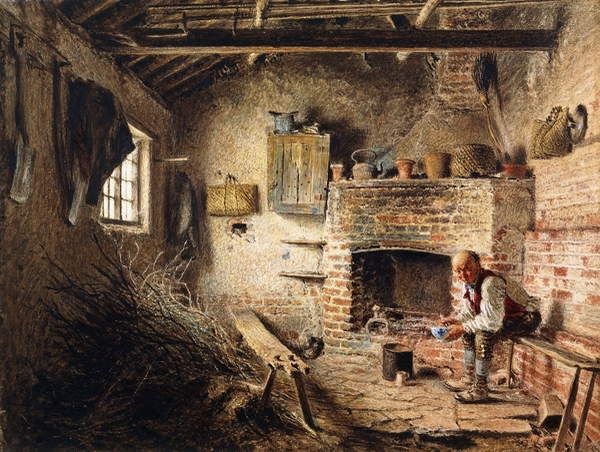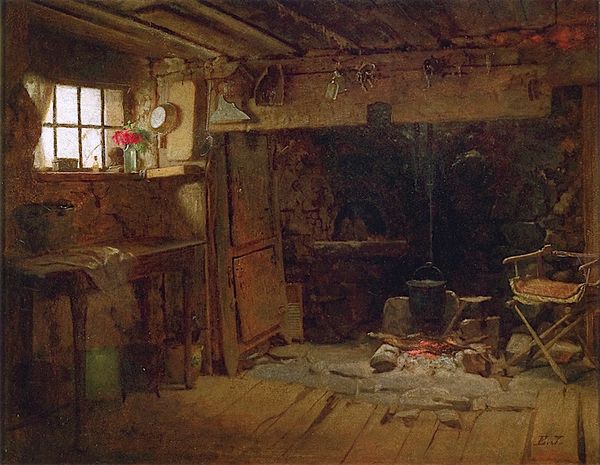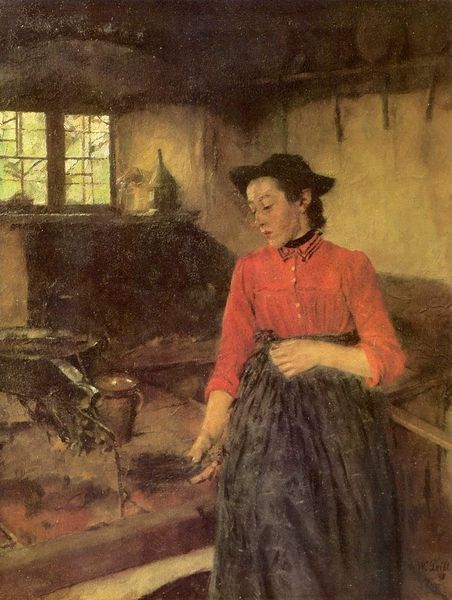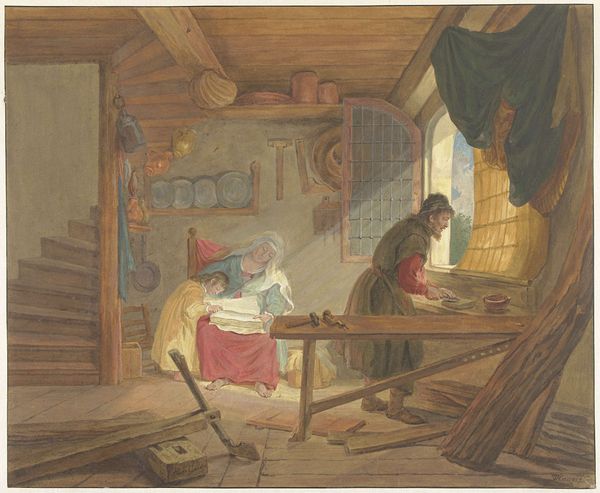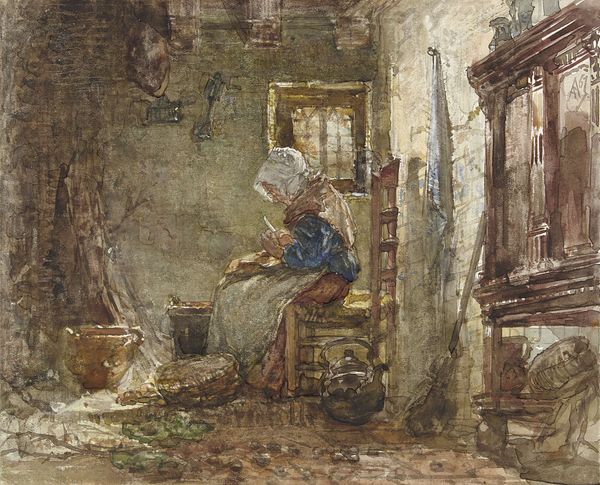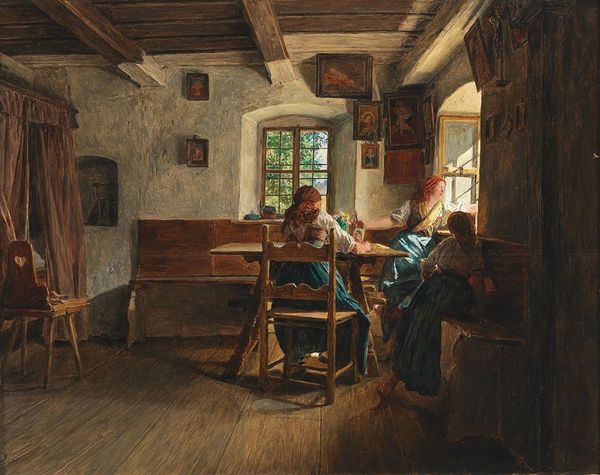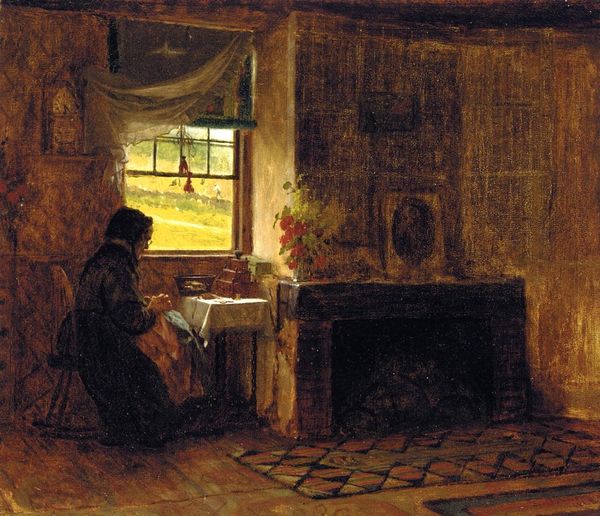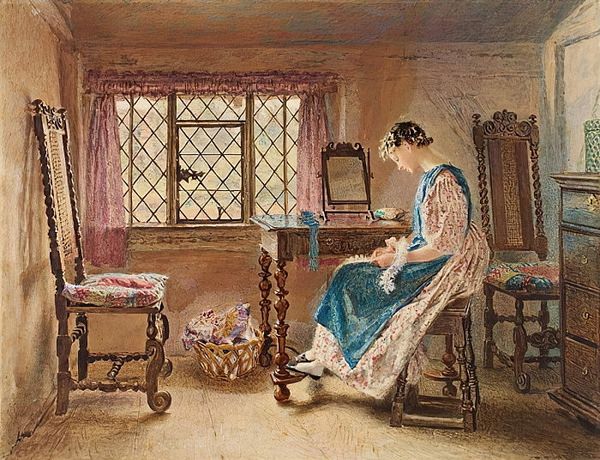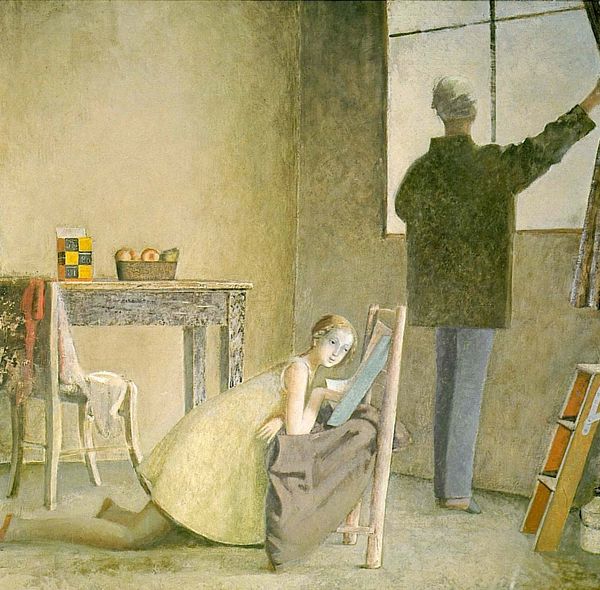
The Maid and the Magpie, A Cottage Interior at Shillington, Bedfordshire 1834
0:00
0:00
painting, watercolor
#
portrait
#
painting
#
landscape
#
historic architecture
#
traditional architecture
#
watercolor
#
romanticism
#
genre-painting
#
watercolor
#
historical building
Copyright: Public domain
Curator: Immediately, I’m drawn into this space. It feels so quiet, so humble, yet bathed in such beautiful, golden light. It reminds me of simpler times. Editor: Well, that might be what William Henry Hunt was aiming for in 1834, with his watercolor titled “The Maid and the Magpie, A Cottage Interior at Shillington, Bedfordshire.” It depicts a scene of domestic life in rural England. Curator: Ah, yes. It’s got that real sense of lived-in authenticity. The colors are earthy, warm. There is this incredible attention to detail. I'm talking about the timber beams in the ceiling and the slightly crooked windowpanes, it’s all just whispering stories. Editor: What's fascinating is how Hunt takes a seemingly ordinary subject—a young woman peeling apples, I believe, in a simple cottage—and elevates it to something quite poignant. The choice of watercolor allows for these luminous effects. And also captures the textures of the rough plaster walls. Curator: Absolutely, the light filtering through the window and catching the apples on the floor; it's magical. What always grabs me in artwork is a sense of peace, of something deeply felt. But what is the story with the Magpie? I can’t seem to see it? Editor: The magpie is an interesting element. While not explicitly depicted, the title itself references a common folklore motif, one perhaps of mischievousness or theft, adding another layer of narrative to this scene. Magpies, historically, were viewed with suspicion, associated with petty theft. Curator: Sneaky! You know, looking at this again, I see beyond just a snapshot of daily life. The girl, that cottage and apples, it embodies a connection to nature. You can also find a respect for simplicity that feels like a balm for our overstimulated world. Editor: Yes, and I believe, too, it’s essential to contextualize these idyllic portrayals. While seeming benign, these genre scenes often reinforce social hierarchies, presenting a romanticized view of rural life that conveniently glossed over the realities of poverty and hardship faced by many in that era. Hunt was indeed celebrated, in part, for presenting a very particular image of English rurality to the urban audiences, that shaped public perception of those communities and helped justify their existing place. Curator: Food for thought! Art really does reflect more than just the surface. It invites us to examine not only beauty, but the underlying stories we tell ourselves about who we are and where we’re going. Editor: Indeed, “The Maid and the Magpie” prompts us to consider how historical narratives of art making, presentation and subject matter continue to shape and color the world we perceive around us.
Comments
No comments
Be the first to comment and join the conversation on the ultimate creative platform.
